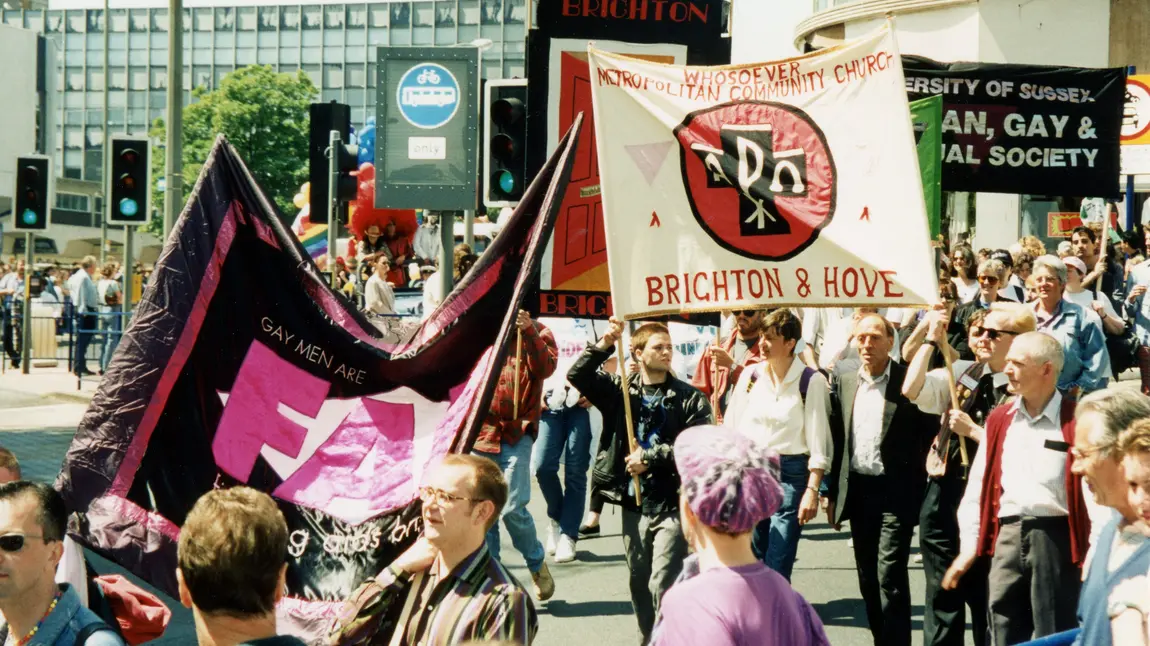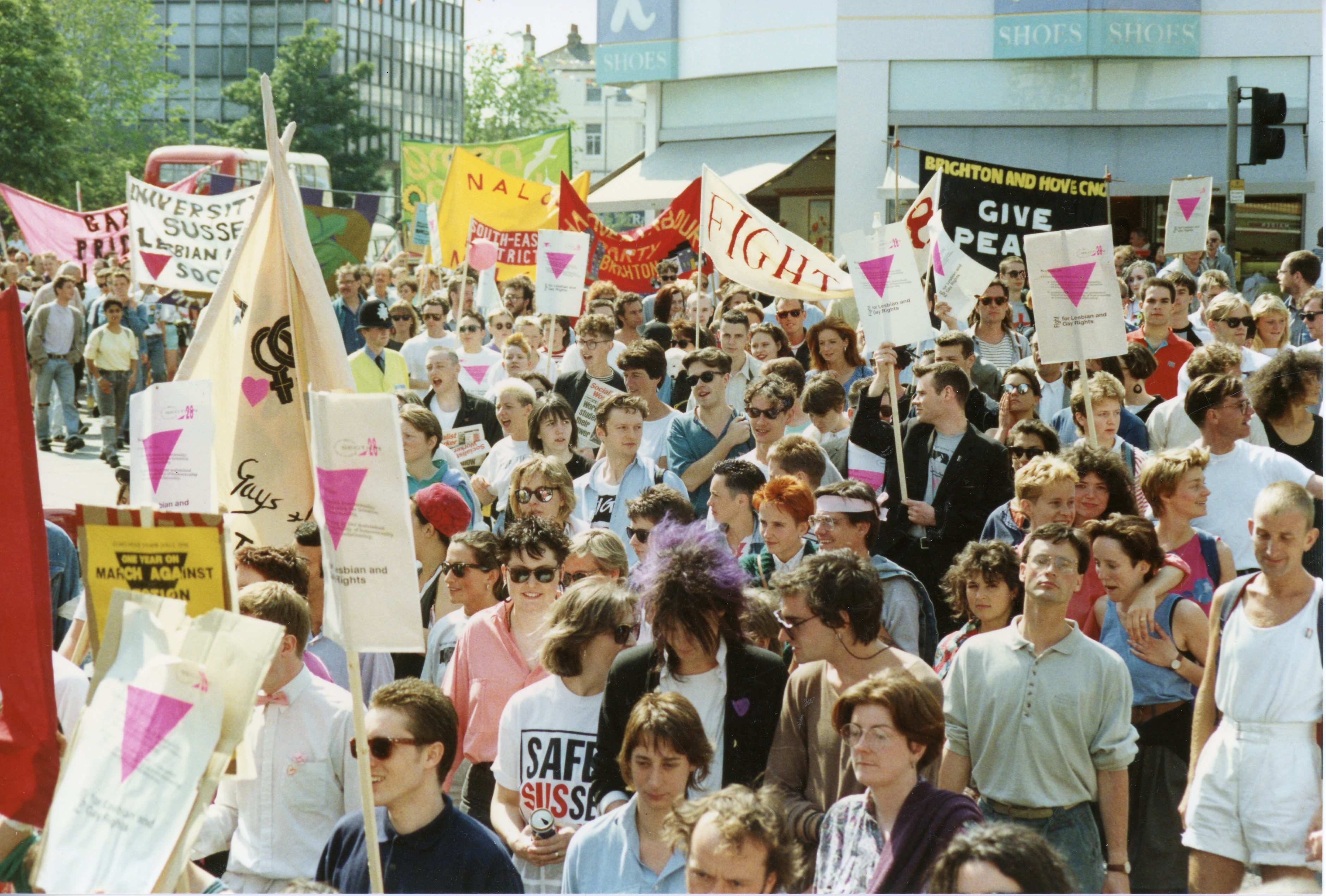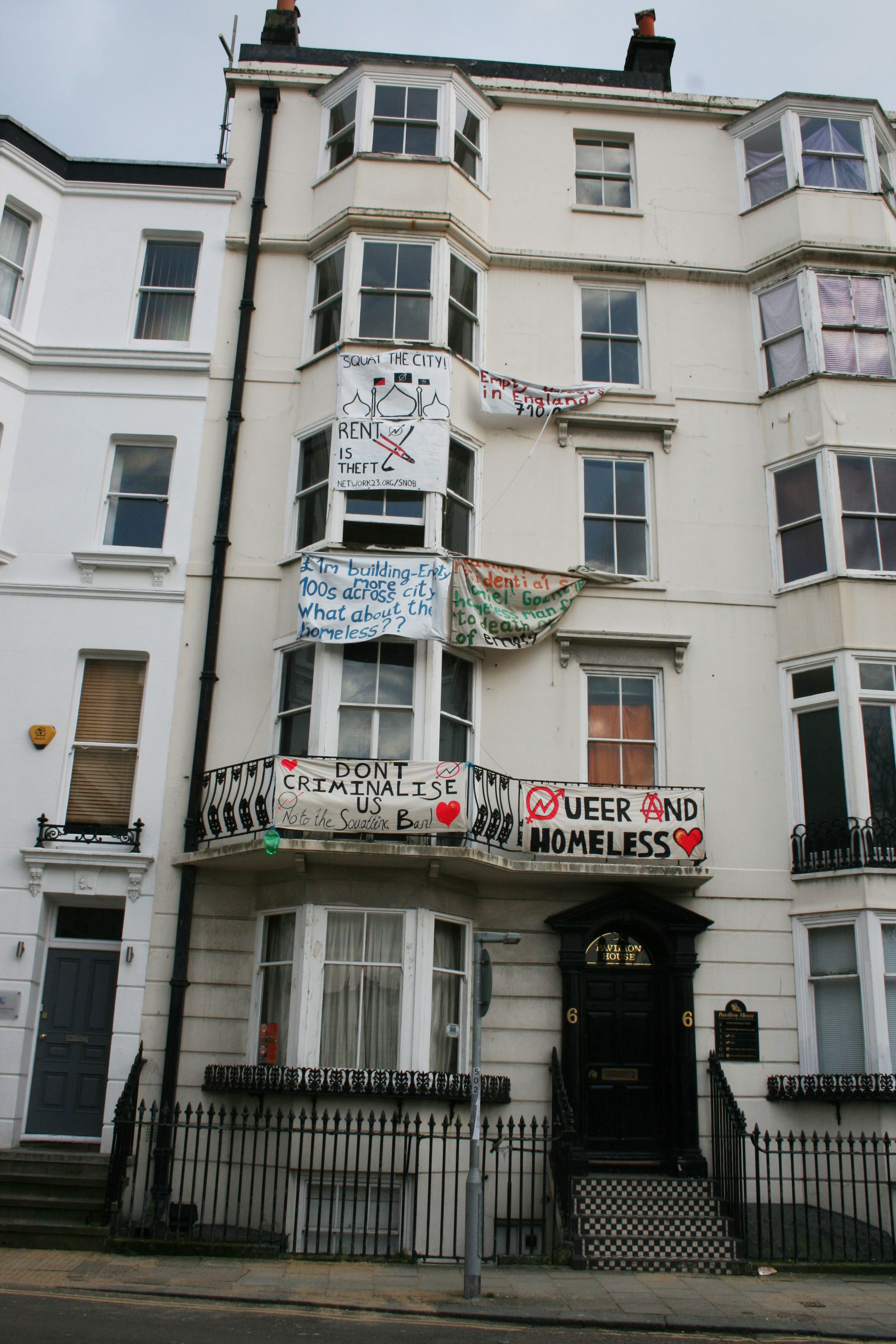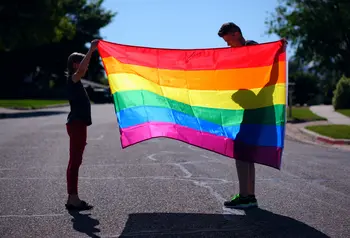Future-proofing heritage: experience and advice from Brighton LGBT+ leaders

Lesley, Chief Executive of New Writing South, and David, Co-Artistic Director of Marlborough Theatre, are collaborating on the project, Building Brighton LGBTQ+ Heritage.
The project involves:
- skills development for volunteers
- establishing a youth board
- building capacity
- strengthening partnerships between organisations
- establishing a digital strategy
The pair share with us their challenges and ambitions, experience and advice.
"The history of LGBTQ+ people in the UK is often presented as being recent, due to the materials we have available to us... [But] LGBTQ+ people have always been here!"
LGBT+ heritage isn't new
Lesley and David say that one of the biggest challenges they face is the reluctance of LGBT+ people to recognise the value of their own lives, stories and personal collections.
“Having been left out of the historical narrative for such a long time, exacerbated by government legislation including Section 28, it has taken a concerted and consistent effort to change people's attitudes.
“Also, the history of LGBTQ+ people in the UK is often presented as being recent, due to the materials we have available to us, which adds to this feeling of being 'new' or a 'modern invention'... [But] LGBTQ+ people have always been here!”

Bravery is required to reflect intersectional reality
The heritage sector and its funders can help by providing opportunities for LGBT+ people to have agency in collecting and preserving their own stories, on their own terms, say Lesley and David. This is particularly important for marginalised LGBT+ groups.
“Marginalised people should be given the chance to rewrite and problematise our existing understanding of heritage, even if this makes the sector or institutions feel uncomfortable at times.
“It shouldn't be about trying to fit marginalised people into existing historical paradigms and ideas – the sector can be braver and more radical, because this is what needs to happen if history is going reflect anything like reality.”

"Partnership working increases your ability to reach a more diverse constituency, so that you're not just talking to people like yourself."
Pros (and some cons) of partnership working
According to Lesley and David, if organisations want to reach more, and more diverse, people, and have a greater impact with the work they do, the answer is partnerships.
“Partnership working increases your ability to reach a more diverse constituency, so that you're not just talking to people like yourself. It also offers the opportunity to build trust with LGBTQ+ communities that might be wary of sharing personal stories.
“Partners can bring valuable resources, especially if they are larger institutions, such as museums and universities. But be aware they might have restrictive ways of working that take some getting used to.
“What we have found is that working with larger institutions has allowed us to influence the way they work, and their policies, in the longer term, which feels like a really valuable legacy for LGBTQ+ people.”
Digital strategy is crucial
Building digital skills is another crucial element in the resilience of heritage organisations, and the legacy of the heritage itself.
The digital strategy Lesley and David are developing as part of their project will ensure that their plans for managing Brighton and Hove’s LGBT+ heritage are future-proofed.
“A lot of recent efforts on collecting LGBTQ+ heritage have focused on digital materials and are often run by grassroots LGBTQ+ community organisations with limited resources. People assume that digital means that it's going to be safe forever, and this couldn't be further from the truth!
“A printed photo from the 1950s might be more likely to survive than a file format from the 2000s. Obsolescence is built into all technology and this is not often factored into the way we collect these materials.”
Top tip – think long term and be realistic
Between them, Lesley and David have many years of experience as LGBT+ activists and cultural leaders in Brighton and the South East. We asked them to finish up by sharing the advice they wish they had been given when they started out:
“Make sure you have comprehensive permission forms for everything that you collect. That includes some imagining of how we might be sharing LGBTQ+ heritage in 10, 20 or maybe even 50 years’ time!
“Also, don't promise to do too much. The exciting bit is collecting, but make sure you genuinely appraise what's going to be needed to maintain and make accessible your material in the long term.”
